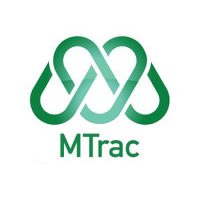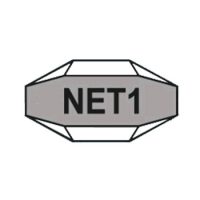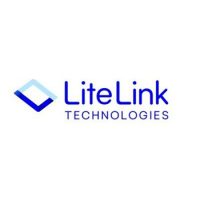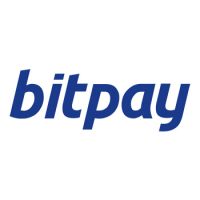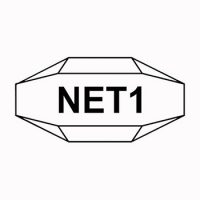Blockchain
TRON DAO Reserve Addresses Questions Regarding USDD Stablecoin
Geneva, Switzerland–(Newsfile Corp. – July 25, 2022) – The TRON DAO Reserve (TDR) has officially answered some frequently asked questions from the community about USDD, the decentralized over-collateralized stablecoin on TRON.
TRON DAO Reserve Addresses Questions Regarding USDD Stablecoin
To view an enhanced version of this graphic, please visit:
https://images.newsfilecorp.com/files/8675/131762_33f0786454addbb2_001full.jpg
The USDD stablecoin is currently the most over-collateralized stablecoin across the entire cryptocurrency market. The core mission of USDD is to provide the blockchain world with a decentralized cryptocurrency of stable value. USDD represents true decentralization across the stablecoin market. Other stablecoins such as USDC or USDT are pegged to a central platform’s U.S. dollar (USD) reserves. By nature, the fundamentals of USDC and USDT are considered centralized stablecoins with strict supervision by regulators worldwide.
Current market conditions have brought fears of assets being subject to liquidation and freezings without the consent of the holders. USDD overcomes these fears from multiple different angles. Whitelisted institutions of the TRON DAO Reserve (TDR) are authorized to mint USDD. The value of USDD is supported by the over-collateralization of highly liquid crypto assets consisting of, but not limited to, BTC, USDT, USDC, and TRX. This allows USDD to be free from centralized intermediaries so users do not have to worry about their assets being frozen with or without notice. This enables holders of USDD to truly have full ownership of their stablecoin.
Stability is an important aspect of a successful stablecoin. Centralized stablecoins such as USDC and USDT are bound by regulators to maintain a 1:1 reserve ratio to the USD. If the centralized authorities of these stablecoins are unable to meet their reserve requirements, this can cause the centralized stablecoins to lose its 1:1 USD peg. USDD is immune to such issues due to its decentralized nature. USDD is not designed to strictly peg to the USD; instead, it floats up and down around it. The price stability of USDD is maintained through monetary policies adopted by the TDR based on market conditions.
Under volatile market conditions, USDD is not considered depegged when it is within 3% up or down from the USD peg. This allows for further flexibility for the TDR to make the necessary monetary policy adjustments if needed. With recent volatility in the markets, USDD has adjusted properly through TDR’s monetary policy tools which have strongly held up against recent concerns. This methodology is known as a Linked Exchange Rate System and has successfully allowed USDD to properly scale. USDD is completely supported by a reserve system filled with liquid assets run by the TDR as mentioned earlier. The details of the TDR assets are published in real-time on tdr.org.
The TDR adopts four monetary policy instruments to ensure the stability of USDD, creating further growth in the TRON ecosystem. The four policy instruments are setting benchmark interest rates, open market operations (OMO), window guidance, and the minting-burning mechanism of TRX and USDD. The TDR will also explore more monetary policy tools to foster further stability and growth of the USDD ecosystem. The end goal of TDR’s monetary policy adjustments is to maintain a stable price of USDD while further empowering it to be the most reliable and decentralized stablecoin on the market.
For more information about USDD, check out our recent blog post, which goes into details on various community questions and concerns.
About USDD
USDD is a decentralized over-collateralized stablecoin launched collaboratively by the TRON DAO Reserve and top-tier mainstream blockchain institutions. The USDD protocol runs on the TRON network, is connected to Ethereum and BNB Chain through the BTTC cross-chain protocol, and will be accessible across more blockchains in the future. USDD is pegged to the US Dollar through TRX and maintains its price stability under the guidance of the TRON DAO Reserve. It enables access to a stable and decentralized digital dollar system that in turn assures financial liberty for everyone.
Website | Twitter | Telegram | Discord | Medium
Media Contact
Sam Elfarra
[email protected]
To view the source version of this press release, please visit https://www.newsfilecorp.com/release/131762
Blockchain
Omnichain protocols offer the answer to blockchain fragmentation

Blockchain fragmentation, stemming from the proliferation of diverse blockchain networks, poses challenges for interoperability and seamless data exchange. In response, omnichain protocols emerge as a solution to bridge these fragmented ecosystems.
These protocols aim to create a unified framework that enables communication and data transfer across multiple blockchain networks. By establishing common standards and protocols, omnichain solutions facilitate interoperability, allowing different blockchains to interact seamlessly.
The adoption of omnichain protocols addresses key issues such as data silos, redundant processes, and inefficiencies caused by blockchain fragmentation. These protocols enable businesses and developers to leverage the strengths of various blockchain networks while mitigating the drawbacks of fragmentation.
With omnichain protocols, organizations can achieve greater flexibility, scalability, and efficiency in their blockchain implementations. These protocols provide a foundation for building interconnected blockchain ecosystems, fostering innovation and collaboration across industries.
As blockchain technology continues to evolve, omnichain protocols play a vital role in overcoming the challenges of blockchain fragmentation and unlocking the full potential of distributed ledger technology.
Source: cointepegraph.com
The post Omnichain protocols offer the answer to blockchain fragmentation appeared first on HIPTHER Alerts.
Blockchain
State-owned German Bank Set to Introduce Blockchain-Backed Digital Bonds

Germany’s state-owned bank, Kreditanstalt fuer Wiederaufbau (KfW), is set to embrace the digital age by issuing its first blockchain-based digital bond. This move signals the bank’s foray into blockchain technology and its commitment to driving its adoption in the financial sector.
The bond that KfW plans to issue will be tokenized, marking it as a ‘crypto security.’ This tokenization involves representing the bond on a blockchain, enabling validation of its transactional history and ownership.
Tokenizing bonds offers several advantages, including the automation of various aspects of bond management such as interest payments and maturity settlements. Additionally, it reduces the need for intermediaries in the process, thereby cutting down on overall transaction costs.
Melanie Kehr, a member of the Executive Board of KfW Group, expressed the bank’s innovative approach in testing new financial market products. She emphasized that the issuance of the digital bond under the German Electronic Securities Act reflects the bank’s commitment to exploring innovative solutions in the financial market.
The issuance of the blockchain-based bond marks a significant step for KfW, as it seeks to attract investors and enhance efficiency and scalability in bond transactions. Tim Armbruster, Treasurer at KfW, highlighted the importance of digitalization in increasing efficiency and scalability, emphasizing the bank’s goal of attracting a wide range of investors for the digital bond.
KfW plans to engage in dialogues with institutional investors in Europe to better understand their needs and explore the potential of blockchain technology in fintech. Cashlink Technologies GmbH, a Frankfurt-based fintech company, will serve as the crypto securities registrar for KfW, facilitating the issuance of the digital bond.
The decision by KfW to issue a blockchain-based digital bond underscores the growing interest in blockchain technology within the financial sector. It represents a significant step towards leveraging blockchain for innovation and efficiency in financial markets.
Source: cryptonews.com
The post State-owned German Bank Set to Introduce Blockchain-Backed Digital Bonds appeared first on HIPTHER Alerts.
Blockchain
UK to Introduce New Stablecoin and Crypto Laws by July

The UK is set to implement new legislation pertaining to stablecoins and cryptocurrencies by July, marking a significant step in regulating the digital asset space. This move underscores the government’s commitment to fostering a clear regulatory framework for the burgeoning cryptocurrency industry.
Scheduled for introduction by July, the new laws will address stablecoins, which are digital assets pegged to fiat currencies to maintain stability. Additionally, the legislation will cover other aspects of the cryptocurrency ecosystem, aiming to provide clarity on regulatory requirements and enhance consumer protection.
The UK’s initiative to introduce these new laws reflects the growing importance of cryptocurrencies in the global financial landscape and the need for comprehensive regulation to mitigate risks and foster innovation. By establishing clear guidelines for stablecoins and cryptocurrencies, the government seeks to promote transparency, accountability, and stability in the digital asset market.
Furthermore, the introduction of these laws by July demonstrates the UK’s proactive approach to adapting its regulatory framework to accommodate the evolving nature of the cryptocurrency industry. As digital assets continue to gain traction among investors and businesses, regulatory certainty becomes increasingly essential to ensure the integrity and resilience of the financial system.
Overall, the UK’s decision to implement new legislation for stablecoins and cryptocurrencies by July signifies a significant milestone in its efforts to establish a robust regulatory framework for the digital asset sector. By providing clarity and guidance to market participants, the government aims to facilitate responsible innovation and foster confidence in the use of cryptocurrencies within the UK’s financial ecosystem.
Source: blockchain.news
The post UK to Introduce New Stablecoin and Crypto Laws by July appeared first on HIPTHER Alerts.
-

 Blockchain6 days ago
Blockchain6 days agoMeritrust Credit Union Joins Metal Blockchain’s Banking Innovation Program
-

 Blockchain Press Releases6 days ago
Blockchain Press Releases6 days agoDeltec Bank Receives System and Organization Controls (SOC 2) Type 1 Certification
-

 Blockchain6 days ago
Blockchain6 days agoZettaBlock announces the addition of blockchain data
-

 Blockchain6 days ago
Blockchain6 days agoGlobal eCommerce Payments Markets to 2030 | A $612 Billion Opportunity | Blockchain Technology and Cryptocurrencies Reshaping eCommerce by Providing Secure, Cross-Border Payment Solutions
-

 Blockchain Press Releases6 days ago
Blockchain Press Releases6 days agoBitrue expands Bitcoin Runes Offerings with GPTV Listing and Staking Options
-

 Blockchain6 days ago
Blockchain6 days agoHong Kong joins global crypto ETF race
-

 Blockchain Press Releases2 days ago
Blockchain Press Releases2 days agoTiger Brokers (HK) officially launches virtual asset trading services, leading the way in Hong Kong’s online brokerage industry
-

 Blockchain2 days ago
Blockchain2 days agoTop 10 Sessions You Can’t Miss at MARE BALTICUM Gaming & TECH Summit 2024 (Tallinn, Estonia, 4-5 June)


















